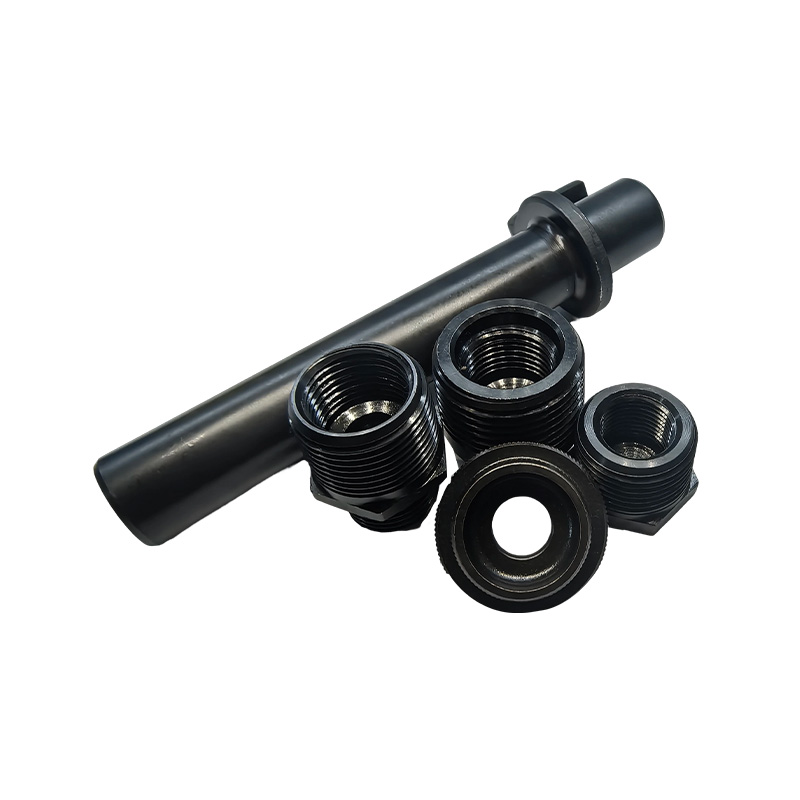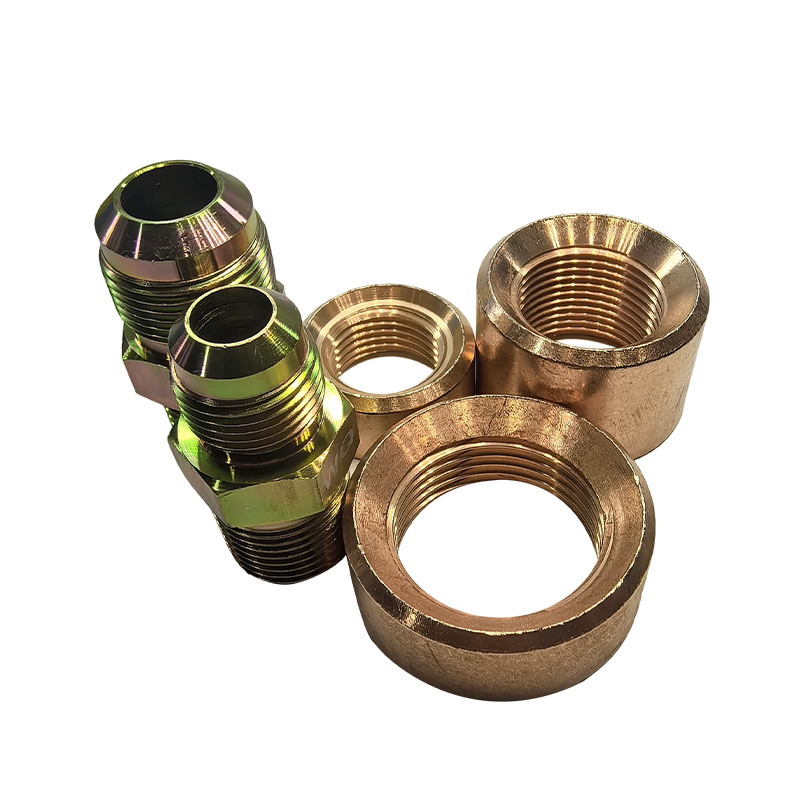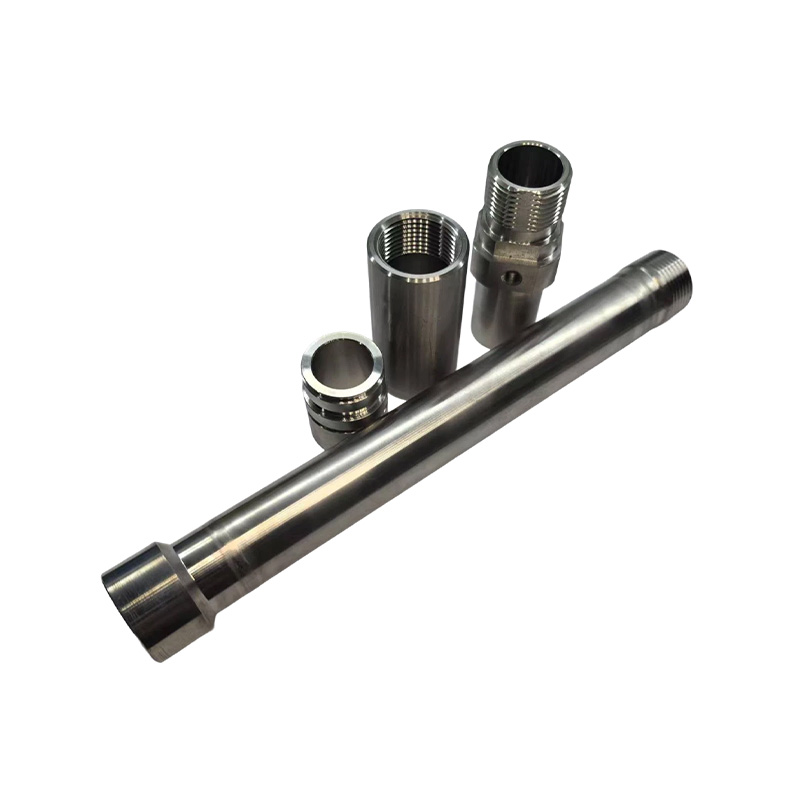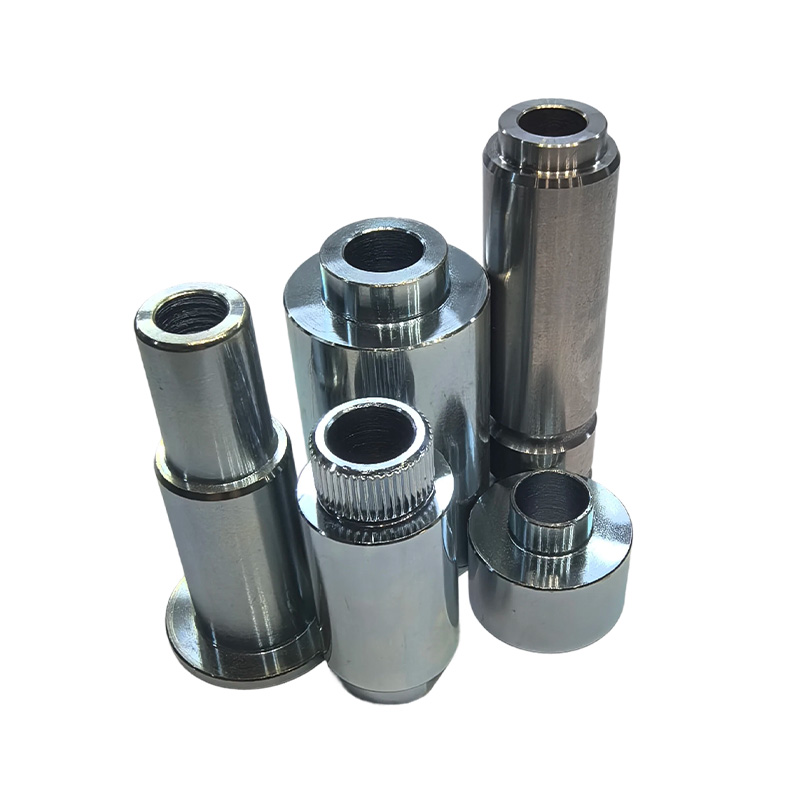Why can tower crane connecting shafts significantly improve overall equipment stability?
Release Time : 2025-08-14
On high-rise buildings and large-scale construction sites, tower cranes (or tower cranes) serve as core vertical transportation equipment. Their operational safety and structural stability are directly linked to construction progress and personnel safety. A tower crane is composed of numerous steel components, including the tower body, boom, slewing mechanism, and counter-jib. The connection of these critical components is not simply a simple assembly process, but relies on a series of high-precision, high-strength mechanical connectors. Among these, the tower crane connecting shaft is the core "joint" that ensures the structural integrity and operational stability of the entire crane. While seemingly ordinary, the connecting shaft is a critical component in the tower crane structural system, bearing enormous loads and complex stresses. It is commonly used to connect key locations such as tower sections, slewing bearings and tower bodies, and boom sections, carrying the heavy responsibility of transmitting bending moments, shear forces, and tensile forces. Its design and manufacturing quality directly impact the crane's overall stiffness, deformation resistance, and dynamic operational stability.
1. High-strength materials and precision manufacturing ensure reliable load bearing.
Tower crane connecting shafts are typically made of high-strength alloy steel and undergo a quenching and tempering process (quenching and high-temperature tempering) to achieve excellent comprehensive mechanical properties—high tensile strength, good toughness, and fatigue resistance. This material can withstand heavy loads, impacts, and alternating stresses for long periods while maintaining structural integrity and resisting plastic deformation or fracture. Furthermore, the connecting shafts are machined with extremely high precision, with diameter tolerances controlled to the micron level and a high surface finish, ensuring uniform contact and proper force distribution when mating with the holes. This precise fit effectively reduces play and looseness in the connection, preventing stress concentration and structural vibration caused by play, thereby enhancing the rigidity and stability of the entire unit.
2. Precise positioning and rigid connections enhance structural integrity.
Tower crane connecting shafts not only serve as a connecting rod but also act as a rigid locating pin. During installation, the connecting shafts are inserted into the pre-recorded holes in the upper and lower tower sections and, in conjunction with locating plates or locking pins, precisely secure the relative position of the sections, ensuring the verticality and geometric accuracy of the tower. This rigid connection connects the separate tower sections in series into a single, integral load-bearing structure, significantly improving the crane's bending and torsional resistance. This is especially true under conditions such as strong winds, heavy loads, or slewing braking, which can generate significant inertial forces and overturning moments. Under these conditions, the connecting shaft, with its strong shear strength and bending resistance, effectively transmits these forces to the foundation, preventing local structural instability or deformation, thereby ensuring stable operation of the equipment in complex environments.
3. Fatigue-resistant design to cope with long-term dynamic loads
Tower cranes are frequently hoisted, slewed, and luffed during operation, subjecting connections to long-term dynamic loads and making them susceptible to failure due to accumulated fatigue. High-quality tower crane connecting shafts are designed with fatigue life in mind. They employ smooth transitions in the shaft shoulder and stress relief grooves to reduce stress concentration points. Furthermore, the surface is often rolled or plated to enhance corrosion and fatigue resistance. These features ensure the connecting shaft remains reliable even under tens of thousands of load cycles, preventing overall structural instability caused by connection failure.
4. Anti-loosening and safety locking mechanisms eliminate operational hazards
To prevent the connecting shaft from accidentally slipping out due to vibration, multiple safety locking devices, such as cotter pins, lock nuts, and positioning clips, are typically installed. These devices securely secure the connecting shaft in place, preventing it from loosening even under severe vibration or impact. This "double-safety" design greatly improves connection reliability and is a key factor in ensuring safe tower crane operation.
5. Modular connections improve installation precision and overall consistency
Modern tower cranes often utilize standardized, modular designs. The connecting shaft serves as a uniform connection element, ensuring interchangeability and installation consistency between tower sections. This standardized connection not only speeds installation but also ensures consistent load-bearing performance at every connection point, preventing structural eccentricity or distortion caused by inconsistent connections, thereby improving overall system stability.
In summary, although a small component, the tower crane connecting shaft plays a critical role as a load-bearing hub within the structural system. Through its multiple advantages, such as high-strength materials, precision manufacturing, rigid connections, and safety locking, it firmly integrates the various components of the tower crane into a stable and reliable whole. It is these seemingly inconspicuous connecting shafts that silently support hundreds of tons of steel structures to operate stably at high altitudes, building a solid safety barrier for construction.
1. High-strength materials and precision manufacturing ensure reliable load bearing.
Tower crane connecting shafts are typically made of high-strength alloy steel and undergo a quenching and tempering process (quenching and high-temperature tempering) to achieve excellent comprehensive mechanical properties—high tensile strength, good toughness, and fatigue resistance. This material can withstand heavy loads, impacts, and alternating stresses for long periods while maintaining structural integrity and resisting plastic deformation or fracture. Furthermore, the connecting shafts are machined with extremely high precision, with diameter tolerances controlled to the micron level and a high surface finish, ensuring uniform contact and proper force distribution when mating with the holes. This precise fit effectively reduces play and looseness in the connection, preventing stress concentration and structural vibration caused by play, thereby enhancing the rigidity and stability of the entire unit.
2. Precise positioning and rigid connections enhance structural integrity.
Tower crane connecting shafts not only serve as a connecting rod but also act as a rigid locating pin. During installation, the connecting shafts are inserted into the pre-recorded holes in the upper and lower tower sections and, in conjunction with locating plates or locking pins, precisely secure the relative position of the sections, ensuring the verticality and geometric accuracy of the tower. This rigid connection connects the separate tower sections in series into a single, integral load-bearing structure, significantly improving the crane's bending and torsional resistance. This is especially true under conditions such as strong winds, heavy loads, or slewing braking, which can generate significant inertial forces and overturning moments. Under these conditions, the connecting shaft, with its strong shear strength and bending resistance, effectively transmits these forces to the foundation, preventing local structural instability or deformation, thereby ensuring stable operation of the equipment in complex environments.
3. Fatigue-resistant design to cope with long-term dynamic loads
Tower cranes are frequently hoisted, slewed, and luffed during operation, subjecting connections to long-term dynamic loads and making them susceptible to failure due to accumulated fatigue. High-quality tower crane connecting shafts are designed with fatigue life in mind. They employ smooth transitions in the shaft shoulder and stress relief grooves to reduce stress concentration points. Furthermore, the surface is often rolled or plated to enhance corrosion and fatigue resistance. These features ensure the connecting shaft remains reliable even under tens of thousands of load cycles, preventing overall structural instability caused by connection failure.
4. Anti-loosening and safety locking mechanisms eliminate operational hazards
To prevent the connecting shaft from accidentally slipping out due to vibration, multiple safety locking devices, such as cotter pins, lock nuts, and positioning clips, are typically installed. These devices securely secure the connecting shaft in place, preventing it from loosening even under severe vibration or impact. This "double-safety" design greatly improves connection reliability and is a key factor in ensuring safe tower crane operation.
5. Modular connections improve installation precision and overall consistency
Modern tower cranes often utilize standardized, modular designs. The connecting shaft serves as a uniform connection element, ensuring interchangeability and installation consistency between tower sections. This standardized connection not only speeds installation but also ensures consistent load-bearing performance at every connection point, preventing structural eccentricity or distortion caused by inconsistent connections, thereby improving overall system stability.
In summary, although a small component, the tower crane connecting shaft plays a critical role as a load-bearing hub within the structural system. Through its multiple advantages, such as high-strength materials, precision manufacturing, rigid connections, and safety locking, it firmly integrates the various components of the tower crane into a stable and reliable whole. It is these seemingly inconspicuous connecting shafts that silently support hundreds of tons of steel structures to operate stably at high altitudes, building a solid safety barrier for construction.







